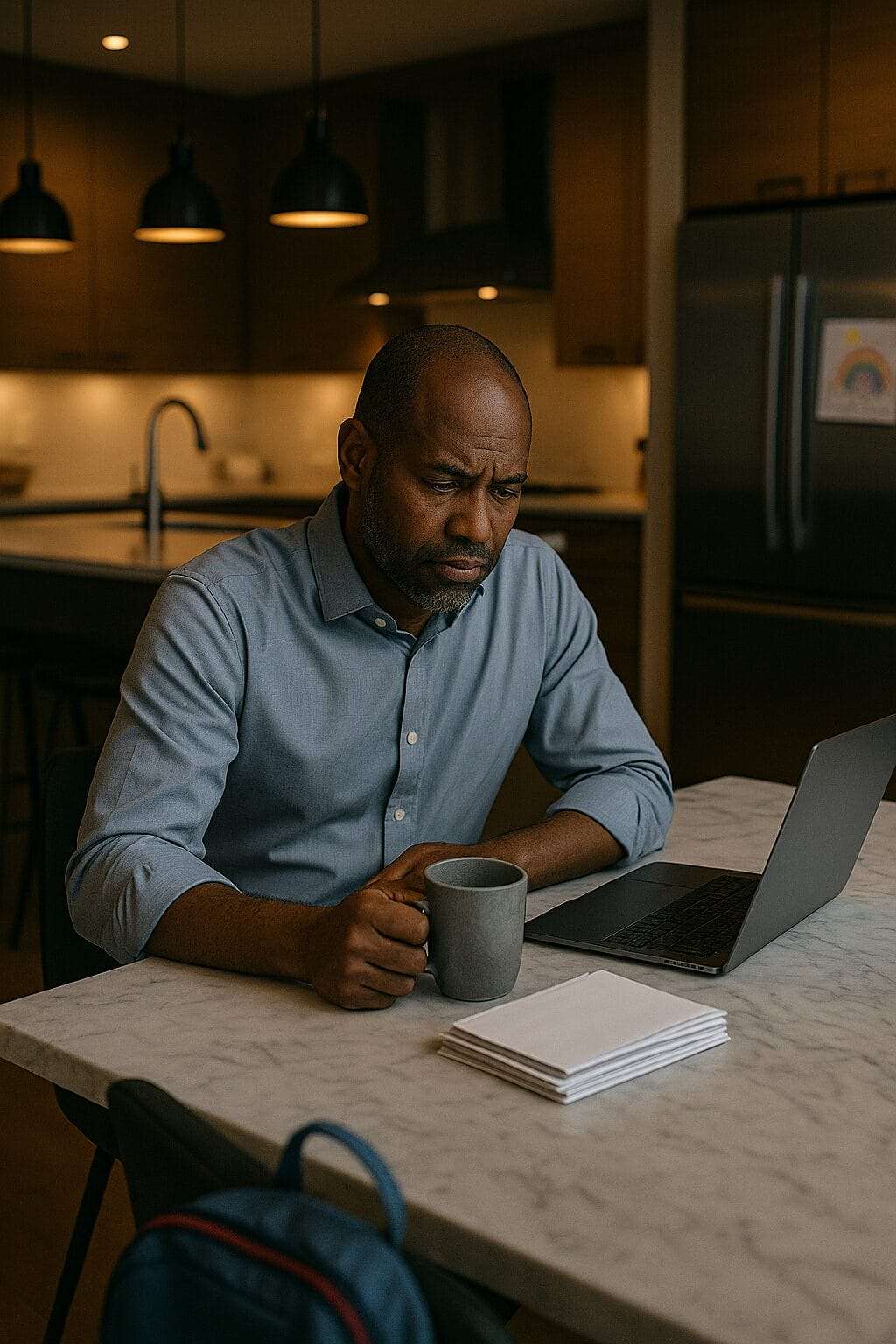
Learned Helplessness Isn’t Laziness—It’s What Happens When You’re Done Fighting
- Updated: July 18, 2025
You didn’t mean to stop.
You’ve got receipts—successes, breakthroughs, people who believe in you.
But somewhere along the way, a part of you just said:
Fck it.
Not in a dramatic collapse. Not in a tear-streaked surrender.
Just… a quiet closing of the door.
“I’m done. Because I can’t see the light at the end of this tunnel.”
And now you’re asking:
Was that fatigue? Burnout? Depression?
Or was it something else?
Maybe it was learned helplessness.
The moment you stopped believing your effort could lead anywhere new.
If you’ve been showing up on the outside but shutting down inside—this post is for you.
Because what you’re feeling?
It’s not failure.
It’s what happens when the strong ones hit their limit…
and still try to keep going.
Your Guide Towards Healing
What Is This Feeling? (Naming It Without Shame)
You haven’t collapsed.
You haven’t disappeared.
You’re still making it to meetings. Still replying to messages. Still showing up.
But inside?
You’ve gone quiet.

Not because you’re lazy.
Not because you lack discipline.
But because something in you stopped believing effort would change anything.
That’s not just burnout. It’s not just exhaustion.
There’s a name for it: learned helplessness.
It’s what happens when you’ve tried—really tried—to fix things.
To show up. To push through.
And nothing got better.
Eventually, your nervous system starts whispering,
“Don’t bother. It’s not worth it. Nothing you do will make a difference.”
And that whisper becomes your reality.
🐾 What Learned Helplessness Really Is (No Psych Degree Required)
Psychologists first noticed this in a lab. Dogs were shocked (literally), and eventually stopped trying to escape—even when the door was open.
They’d been trained by pain to believe there was no point in trying.
Sound familiar?
Humans do it too.
We stay in relationships we hate.
We keep jobs that drain us.
We stay silent when we want to scream.
Not because we’re broken—but because we’re tired of trying to win a rigged game.
That’s what learned helplessness is.
It’s not a diagnosis.
It’s a response to too much failure, too much pressure, and not enough support.

🧩 What It Feels Like (In Real Life)
You don’t say, “I give up.”
You say things like:
“It is what it is.”
“I just need to be more realistic.”
“I’m fine. It’s not that bad.”
“This is probably just how I am now.”
And slowly, your ambition shrinks. Your hope dulls. Your fire goes out.
Not because you didn’t care.
But because you cared too long without relief.
🔍 You Might Be Here If…

- You still meet deadlines—but everything feels heavier than it should.
You have goals on paper, but no pull toward any of them.
You tell yourself “I’m just tired”… but deep down, you know it’s something else.
You’ve stopped expecting relief—from therapy, from routines, from anything.
You talk less in meetings—not because you have nothing to say, but because you assume no one’s really listening.
You’ve started calling disengagement “peace.”
You’re productive—but detached. You show up—but not really.
You’ve convinced yourself this flatline is just adulthood.
You secretly miss the version of you that used to care more… but can’t figure out how to get back there.
You’re scared to hope again—because the crash of disappointment might just finish you.
This isn’t a lack of strength.
This is what happens when you’ve carried it alone for too long—and your body, your spirit, finally says, “No more.”
🙅🏾♀️ Why Smart, Capable People Miss the Signs
Learned helplessness doesn’t always look like despair.
Sometimes it looks like your calendar still being full.
Your inbox still being cleared.
Your bills still being paid on time.
Because high performers don’t always break down.
They break inward.
And when you’re used to functioning under pressure, you normalize the numbness.
You call it “being efficient.”
You call it “staying focused.”
You even call it “growth.”
But what you’re actually doing…
is adjusting to a life that no longer moves you.

The Signs
Let’s decode this.
See if any of these sound familiar:
You’ve been praised for your resilience—so admitting you feel stuck feels like betrayal.
You’re so used to leading that asking for help comes with a side of guilt.
You’ve trained yourself to override discomfort, not sit with it.
You worry that if you stop doing, you’ll fall apart—and won’t know how to put yourself back together.
You’re surrounded by people who count on you being “the strong one”—and you don’t want to scare them with the truth.
And if you’ve been in survival mode long enough?
Even thriving feels threatening.
Joy feels unfamiliar.
Rest feels indulgent.
And the idea of hope? It feels… dangerous.
So you stay stuck.
Not because you want to be—but because you’re not sure it’s safe to want anything more.
This isn’t burnout.
It’s deeper than that.
It’s what happens when your nervous system starts believing that trying again would only hurt more.
💧 What Numbness Is Really Costing You
You’ve told yourself this is temporary.
That you’ll bounce back soon.
That this flatness is just a “low season,” and eventually, the spark will return.
Maybe it will.
But maybe—what you’re calling a phase…
is actually a quiet resignation.
Not a conscious decision to give up.
But a slow erosion of belief.
And here’s the hard part (the part you’ve probably avoided naming):
You’re adapting to your own disconnection.
You’ve gotten good at functioning without feeling.
You’ve learned how to show up without being fully present.
You’ve even convinced yourself that numbness is safer than disappointment.
But it’s costing you.

💸 The Hidden Toll
Your relationships feel thinner. You’re there—but not really there.
Your creativity is muted. Ideas don’t flow like they used to.
Your confidence is shaky. Even small tasks feel loaded.
Your boundaries blur. Because when you stop hoping, you stop protecting what matters.
Your vision dulls. You’re no longer chasing something real—you’re just trying to not drown.
You haven’t collapsed—but you’ve flattened.
And in that flattening, you’ve slowly started to disappear from your own life.
💬 Gentle Reframe:
This isn’t a failure of willpower.
It’s what happens when strong people stop seeing themselves reflected in the life they’ve built.
You didn’t stop trying because you’re weak.
You stopped trying because you were adapting to survive.
But survival was never the goal.
You were made for more than white-knuckling your way through the day.
🛠️ The Exit Strategy (5 Shifts to Reclaim Your Power)
This isn’t about hustling your way out of a rut.
It’s about reconnecting to yourself—slowly, gently, and on your own terms.
If learned helplessness trained your nervous system to believe “nothing I do will work,” these shifts are how you start proving it wrong. Not with force. With presence.
Here’s where to begin:

1️⃣ Name It Without Shame
You’re not just “in a funk.” You’re not “too sensitive.” You’re not being dramatic.
You’re responding to pressure that outlasted your reserves.
Call it what it is—learned helplessness—so you can stop blaming your character for what was actually a trauma-informed adaptation.
Naming the pattern is step one in breaking it.
2️⃣ Start Somewhere Stupidly Small
If brushing your teeth or taking a walk feels like climbing Everest? That’s not weakness. That’s nervous system burnout.
Pick one ridiculously doable action—and do it for you, not for productivity.
You’re not trying to “crush your goals.” You’re trying to prove to yourself: I can move again. I still have choice.
3️⃣ Reconnect Before You Rebuild
Before you set new goals or redesign your five-year plan, reconnect with the part of you that’s still alive underneath the numbness.
That might look like:
Reaching out to one safe person and telling the truth
Writing one unfiltered page in a notebook
Letting yourself want something again, even if you’re not ready to pursue it
This is not about building momentum. It’s about building relationship—with yourself.
4️⃣ Choose Friction Over Flatline
Helplessness teaches you to avoid anything that might disappoint you. But real healing? It comes with friction.
Not pain, not chaos—friction.
Doing something that feels slightly vulnerable. Slightly risky. Slightly out of the numb comfort zone.
That’s how belief is rebuilt: by moving toward what scares you a little—but matters a lot.
5️⃣ Track Your Energy, Not Just Your Effort
You can check all the boxes and still feel dead inside.
Start asking:
Did that interaction energize or drain me?
Am I doing this from connection—or compulsion?
What would feel nourishing today, even if it’s not productive?
Helplessness often survives because we stop checking in with our own inner signals. This is how you reawaken them.
This isn’t about fixing yourself.
It’s about remembering: you were never broken.
You were adapting to survive.
Now, you get to learn how to live again.
FAQ: Real Answers for the Strong-but-Stuck
Is learned helplessness the same as burnout or depression?
Not exactly. While all three can feel draining and overwhelming, learned helplessness is more about giving up on hope after repeated failure—not just being tired or chemically depressed. It’s a mindset shaped by disappointment, not a mood or a diagnosis.
🔗 Read: Time Management in Recovery: Finding Rhythm After the Wreckage
Can you still be high-performing and stuck in learned helplessness?
Absolutely. Many leaders are functional but emotionally flatlined. Learned helplessness doesn’t always mean collapse—it often means quiet resignation behind a polished exterior.
Related Reads🔗:
How long does it take to recover from learned helplessness?
There’s no set timeline. The more support, self-trust, and emotional safety you build in—the faster your system begins to thaw. What matters isn’t speed. It’s honesty and gentleness as you rewire the belief that your effort still matters.
This Is Where You Begin Again
You’ve survived the slow fading of your own spark.
You’ve gotten used to silence where there used to be drive.
And maybe you’ve blamed yourself for losing the fire in the first place.
But here’s what I need you to know:
You’re not lazy. You’re not broken.
You’re not unmotivated. You’re not past your prime.
You’re a strong person who adapted to survive—until that adaptation became a cage.
You can’t think your way out.
You can’t push your way out.
But you can begin again.
Not by becoming someone else—
but by coming back to the version of you that never stopped wanting more.
🎙️ Want more truth like this?
Listen to my podcast for raw, real talk on emotional healing, leadership, and coming back to yourself.
👉 The Introverted Entrepreneur
💛 Ready to do the deeper work?
This isn’t performance coaching. This is healing, growth, and leadership from the inside out.
👉 Apply for coaching
✍️ Something in this land hard?
You’re always welcome to write me a note.
👉 Contact me here





